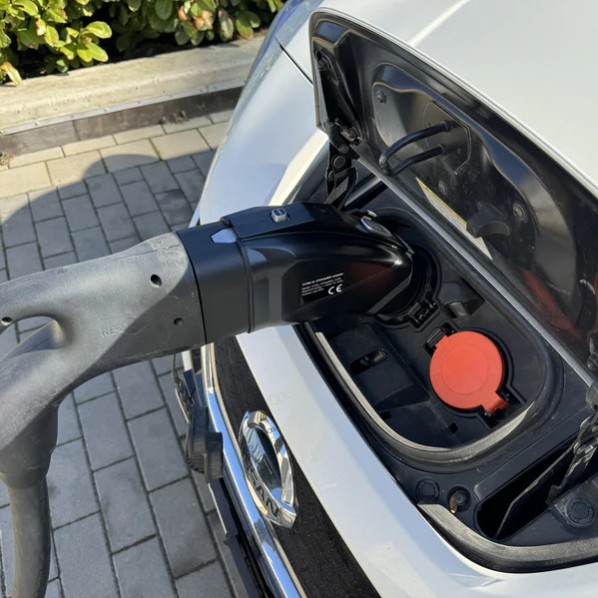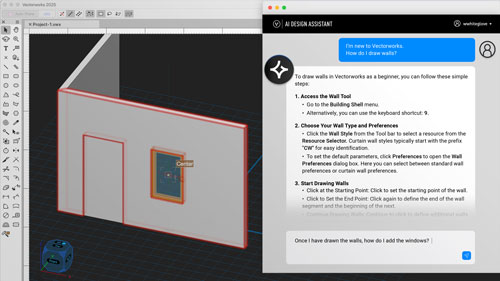When It Comes to Fire Safety, Assumptions Can Be Dangerous
In Ireland, we often take great pride in our homes, seeing them not just as buildings but as sanctuaries—places to raise families, entertain friends, and create lasting memories. But when it comes to fire safety, many homeowners unknowingly rely on outdated or inaccurate beliefs. These myths, though persistent, can compromise the integrity of your home’s fire protection and put lives at risk.
In this article, we address nine of the most common misconceptions, explain the real facts behind each one, and show how proactive steps—including trusted solutions from Flame Stop—can make all the difference.
Myth #1: “A Smoke Alarm Alone Provides Adequate Fire Protection.”
It’s easy to believe that if your home has a working smoke alarm, you’re covered. After all, alarms are legally required and give early warnings during a fire. But while alarms are a critical first step, they are reactive by design. They only respond once smoke is present, meaning the fire has already begun spreading.
Truth: Smoke alarms are essential, but they’re reactive. They sound an alert when smoke is already present, meaning the fire has already started and is spreading.
True fire safety starts before the flames. Passive fire protection—like fire-stopping barriers and intumescent seals—works quietly in the background to compartmentalise fire and smoke, slowing their spread. This gives your family critical time to evacuate and emergency services a better chance to respond effectively.
Combining early warning systems like alarms with built-in passive fire-stopping is the best way to ensure layered, dependable protection for your home.
Myth #2: “Any Sealant Will Do the Job.”
Many homeowners assume that any gap filler or sealant—especially the type used in general DIY jobs—can double as a fire safety solution. This is a dangerous misunderstanding. Most generic sealants aren’t fire-tested and won’t hold up under high temperatures.
Truth: Not all sealants are created equal. Standard silicone or expanding foams used in DIY can burn or melt during a fire, allowing fire and smoke to pass through service openings.
Only certified fire-stopping materials are tested to withstand high temperatures for defined periods. When installed correctly, they preserve the integrity of fire-rated walls and ceilings.
Fire safety isn’t a place to cut corners. Investing in certified materials and professional installation ensures your sealant does more than just fill a gap—it becomes a life-saving barrier.
Myth #3: “Passive Fire Protection Is Only for Large Commercial Buildings.”
This myth likely stems from the visible presence of fire safety systems in office buildings or shopping centres. But passive fire protection—like fire-stopping and fire-rated barriers—is just as vital in domestic homes, where the same principles of containment apply.
Truth: While passive fire protection is required in commercial settings, it’s just as critical in residential homes—especially multi-storey homes, apartments, and any building with multiple rooms and service penetrations.
Whether it’s a detached home or a duplex, your property likely has hidden fire risks—from cabling through walls to boiler flues. Installing proper fire-stopping in these areas contains potential fires to their origin point and limits damage.
Passive protection isn’t about building type—it’s about building safety. Bringing commercial-grade standards into the home ensures everyone under your roof stays safe.
Myth #4: “Sprinklers Can Replace Passive Fire Protection.”
There’s a growing awareness of sprinklers in homes, which is positive. However, many people mistakenly think sprinklers alone are enough. Sprinklers are helpful, but they are mechanical systems and can fail under certain conditions.
Truth: Sprinklers are active fire systems—they require power, water, and mechanical triggers. Passive systems, on the other hand, are always working. They don’t rely on external conditions or activation.
Think of passive and active systems as complementary. While sprinklers can help control flames, passive fire-stopping holds the fire back, protects structural elements, and maintains escape routes.
Sprinklers and fire-stopping are not either/or options. Together, they form a resilient safety net that protects both property and people.
Myth #5: “Once Installed, It Never Needs Maintenance.”
It’s a common misconception that passive fire protection is ‘fit and forget.’ In reality, over time, wear, renovations, or even rodent activity can compromise fire-stopping installations.
Truth: Fire-stopping systems can be disturbed by later works—new cabling, pipes, renovations, or even pests can compromise seals.
Routine inspections ensure your fire-stopping is intact and up to standard. It’s a bit like servicing your boiler—a small investment in maintenance for peace of mind and compliance.
A well-maintained system saves lives. Schedule periodic checks to ensure your fire protection evolves alongside your home.
Myth #6: “Fire-Stopping Is a DIY Job.”
With access to sealants and foams at any hardware store, some homeowners are tempted to handle fire-stopping themselves. But DIY lacks the precise knowledge of product compatibility, application techniques, and legal compliance.
Truth: Fire-stopping installation is highly specialised. Getting it wrong—even slightly—can negate the product’s fire rating entirely.
When carried out by certified professionals like Flame Stop, fire-stopping ensures compliance with Irish fire regulations and your home insurance. It also means the materials used are installed to manufacturer specifications, preserving their tested integrity.
Trusting experts ensures your system does what it’s meant to. Don’t gamble with fire protection—let specialists secure your safety.
Myth #7: “Fire-Stopping Only Slows Smoke, Not Fire.”
People often underestimate fire’s behaviour, assuming it travels slowly or only via open flames. In truth, heat and smoke can spread quickly through unprotected spaces, causing major damage even before flames arrive.
Truth: Effective fire-stopping systems slow both. Fire-rated sealants and wraps expand under heat to physically block flames and heat.
These products give your building time—time for people to escape, for emergency services to arrive, and for critical structural elements to remain intact.
Passive fire protection buys you time—and in a fire, every second counts. Don’t settle for half-measures when your home’s safety is at stake.
Myth #8: “All Fire Sealants Are Safe for Home Use.”
It’s understandable to assume that anything sold in a store is suitable for the home. However, some fire sealants release chemicals or odours that aren’t ideal for residential environments.
Truth: Some fire sealants emit strong odours or VOCs, making them unsuitable for homes with young children, elderly residents, or respiratory concerns.
Flame Stop prioritises safe, low-VOC fire-stopping products that are ideal for domestic use. These materials offer all the fire resistance you need without compromising indoor air quality.
Safer air means safer families. Ask your installer about low-VOC options to keep your home protected and breathable.
Myth #9: “Fire Regulations Don’t Really Apply to Homes.”
Some homeowners believe that as long as their house is built, inspected, and insured, no further regulation applies. But the Fire Services Acts and related regulations still have implications—especially for landlords and anyone carrying out works.
Truth: The Fire Services Acts and Building Control Regulations in Ireland apply to all buildings, including private dwellings—particularly if you rent out a room or operate a business from home.
Being proactive about fire safety helps meet legal responsibilities, enhances property value, and protects loved ones. Flame Stop provides consultancy to ensure your home complies with national guidelines—so you stay ahead of the curve.
Compliance isn’t just for professionals. Every Irish homeowner has a role to play in upholding national fire safety standards.
Your Home Deserves the Full Story
Fire safety is not just about ticking a box or buying an alarm. It’s about understanding how fire behaves and how to stop it effectively. By challenging these nine myths, Irish homeowners can take real, practical steps to improve safety.
Whether it’s a fire-stopping survey, certified installation, or tailored advice, Flame Stop is ready to help you protect what matters most.
Ready to upgrade your fire safety? book a consultation today.
Royalty free Image from PixaBay to support the SEO Content
The post 9 Fire Safety Myths Busted: What Every Irish Property Owner Needs to Know appeared first on Flame Stop.


 Network with Imagine, my business has really grown. Traditionally on the island, we are very dependent on the tourism season. Now with fibre, I finally have a fast, reliable connection to support online sales and ensure customer service year-round. I can now focus on what I enjoy most about the business: being creative.”
Network with Imagine, my business has really grown. Traditionally on the island, we are very dependent on the tourism season. Now with fibre, I finally have a fast, reliable connection to support online sales and ensure customer service year-round. I can now focus on what I enjoy most about the business: being creative.” The findings challenge the Government’s current heat decarbonisation strategy, which relies almost exclusively on deep retrofitting and heat pumps. These options remain financially out of reach for many, especially in rural Ireland where 700,000 homes rely on liquid fuels and where incomes are lower and housing stock older.
The findings challenge the Government’s current heat decarbonisation strategy, which relies almost exclusively on deep retrofitting and heat pumps. These options remain financially out of reach for many, especially in rural Ireland where 700,000 homes rely on liquid fuels and where incomes are lower and housing stock older.








 Yesterday, we hosted a coffee morning across all TOBIN offices to mark Pride Month – and what a lovely way it was to bring our teams together!
Yesterday, we hosted a coffee morning across all TOBIN offices to mark Pride Month – and what a lovely way it was to bring our teams together!






 It’s time to move beyond passive scrolling and start building powerful, authentic relationships that drive real opportunities.
It’s time to move beyond passive scrolling and start building powerful, authentic relationships that drive real opportunities. Proven ways to revive & strengthen your LinkedIn network
Proven ways to revive & strengthen your LinkedIn network Whether you’re a consultant, business owner, or ambitious professional, this masterclass will arm you with actionable insights to elevate your
Whether you’re a consultant, business owner, or ambitious professional, this masterclass will arm you with actionable insights to elevate your  IMCA Members: Earn CPD credits & sharpen your digital edge.
IMCA Members: Earn CPD credits & sharpen your digital edge.
 The missing lever of organisational performance
The missing lever of organisational performance Case studies & real world examples
Case studies & real world examples How to move from rigid hierarchies to engagement-led organisations
How to move from rigid hierarchies to engagement-led organisations



 CPD credits for IMCA Members
CPD credits for IMCA Members 
